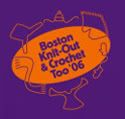
Our second day of Barcelona was jam-packed. SO much we wanted to see and so little
time. We started off by exploring La Rambla. It is called Spain's most famous street and it truly is a tourist trap...but still very interesting. Flanked by narrow traffic lanes, the middle is a broad, tree-lined pedestrian walkway which stretches from the Port all the way into the heart of the city. It is packed with kiosks, newstands, souvenir vendors and populated with street musicians, pavement artists, mimes and living statues. It got its name from a seasonal stream (raml in Arabic) that once followed its course. We were most fascinated with the kiosks selling pets. You could buy almost any kind of small animal here.

baby chicks

beautiful birds of all colors


baby bunnies

fish and turtles

even chipmunks!
When we got to the top of the Rambla we found the Placa de Catalunya, a beautiful plaza with lots of flowers in full bloom.


It was a good spot for another photo op!

Such a wonderful open space in the heart of the city...

...surrounded by turn of the century office buildings...

...and The Coliseum, a grand old Victorian theatre.
Next we headed back down the Rambla to stop in at the Mercat de la Boqueria. Some sources date this market back to 1200.

It is open every day, Monday through Saturday and is absolutely huge! Just about every edible item imaginable is available...

Fresh meats

Fruits and Vegetables

Fish so fresh it is practically still swimming

Nuts and dried fruits

Dead baby piggies posed to look like...um...live baby piggies

Every kind of poultry imaginable

Who knew there were so many kinds of salami?

Exotic spices from all over the world

...and did I mention how fresh the fish is? mmm-mmm-good!!!!
Ok, so now we're ravenously hungry. No big surprise there. We found a little place near the market with fried calamari and it was delicious! We then decided to find a museum that had been listed in the Lonely Planet guidebook. The Museu d'Historia de la Ciutat is an excavation site underneath the Casa Padellas, an estate built for a 15th century noble family. It is located in the heart of the Barri Gotic, adjacent to the cathedral. We entered at the ground level and took an elevator down to the site of the Roman town which orginally stood on that spot. The "floors" on the elevator were actually dates. We entered in 1996 and got out in 12 BC in ancient Barcino. As we walked on catwalks we saw the locations of the main road, a defensive tower, some shops, houses (some with original mosaic floors), public baths and storage areas for wine and garum, a type of fish sauce used widely throughout the Roman Empire. Part of the walk is under the present Cathedral where evidence of the Romanesque and Visigothic predecessors are visible. We travelled upwards and through history, passing through an exhibition of life in Barcelona in the 8th and 9th centuries when Visigoth and Moslem powers ruled. We eventually ended up in the greater Royal Palace built in the 14th century. Tinell Hall is a grand banquet room where nobles would have conducted their business. It is next to St. Agatha's chapel where the family worshipped. It contains an amazing alterpiece crafted by one of Barcelona's most noted artisans. No photographs were allowed inside the museum but here is a picture of the exit showing the banquet hall of the left and the chapel on the right.

We had one more tourist trip to make... a walk out to the Sagreda Familia, the massive cathedral commissioned in the 1880's and still under construction 125 years later. Wealthy archconservatives in Spain were nervous about the outbreak of liberalism in Europe. Garibaldi was uniting Italy and democracies were popping up everywhere. Pope Pius IX was nervous that this trend would undermine the power of the church so he called for a rededication to the "family values" in Spain. The Holy Family (Sagreda Familia) of Jesus, Mary and Joseph was the symbol he used. The original architect quit and in 1884 Antoni Gaudi took over the project. Gaudi was already a celebrated architect and worked on this project concurrent with a number of other high profile builidings, parks and monuments until 1888 when he dedicated his entire life to the cathedral. Gaudi did nothing on a small scale. His style was grand and in your face. The design for the church is a basic Gothic cathedral pattern of a cross shaped apse but that's basically where the tradition ends. Gaudi detested straight lines, believing there are none in nature. So every aspect of the building has curves and twists. He designed eighteen soaring towers with swelling outlines to imitate the topography of mountains, representing in ascending heights, the twelve apostles, the four evangelists, the Virgin Mary and Christ.

Their heights range from 100 meters (over 320 feet) to 170 meters (over 550 feet). The Church will have three grand façades: the Nativity façade to the East, the Glory façade to the South (yet to be completed) and the Passion façade to the West, each with lifesize statuary. As you can see by all of the cranes and construction equipment in the pictures, the building is far from finished. In 1926 Gaudi was killed by a streetcar while he was crossing the street lost in thought. He had become so ragged and poor trying to keep the project going that no one recognized him at first. He was buried in a vault in the unfinished church and the whole city turned out for his funeral. His original patrons of the project had abandoned their financial support years before, becoming impatient at the slow progress. Gaudi was forced to raise the money himself, offering craftsman lessons in the project's workshops and occasionally panhandling for funds on the streets around the construction.
After his death worked slowed nearly to a stop. Only a few people believed in the project and kept it going. The great depression and the Spanish Civil War nearly destroyed the whole thing. In 1936 Spanish Anarchists burned and smashed everything they could find, including Gaudi's workshop and his original plans. Construction did not resume again until 1952. Work has been continuing in fits and starts and the new target date for completion is 2026, a full 100 years after Gaudi's death and 144 years after the first stone was laid. It is clearly a monument in every sense of the word.

The style doesn't appeal to everyone...I found it too overwhelming...but I have to respect the amazing detail orientation and dedication that a project of this magnitude clearly demonstrates. Judging from the crowds and the lines of people that were waiting to get inside (for a fee, of course)it is fast becoming a shrine to the sheer determination of the human spirit. It is a controversial site not lacking in critics and experts disputing whether Gaudi's wishes are being carried out but, when all is said and done, it definitely commands attention and will eventually take its place in the manmade wonders of the world.

We walked around the perimeter of the site and decided against standing in the long lines baking in the sun. Instead we opted to duck into a Gelateria across the street and indulge our palates with some delicious gelato. We then visited a souvenir shop, stocked up on some things to bring home and started back to the hotel. On the way we passed another Barcelona icon, the Placa de Toros. Meredith grabbed a quick picture.

There were no bullfights while we were there. I wouldn't have gone anyway. I can't imagine sitting in a stadium watching a series of programs whose total content consists of slowly killing a large majestic animal. I know the pageantry is impressive but the sick feeling in my stomach would preclude me from appreciating it. It is a very controversial tradition and there are strong forces in Spain, PETA among them, who are trying to get the bullfights outlawed, or at least modified to spare the bulls. It's a difficult dilemma: hundreds of years of tradition versus a more humane and animal-friendly environment.
We were exhausted when we got back to the hotel. The heat and miles of walking had taken its toll. After a nap, we found a small restaurant that served great paella, poked around the old city for a while and then turned in to get ready for our trip to Madrid the next morning.
















No comments:
Post a Comment